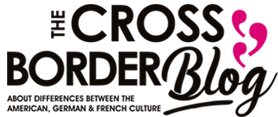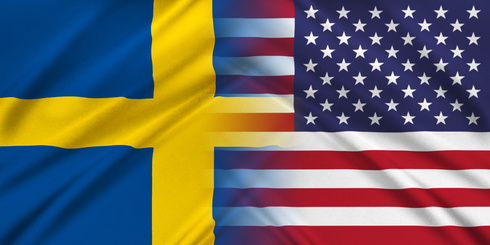
Hairdressing is a low-paid profession in the United States and Europe. Hairstylists undergo shorter training in the United States, which may explain why many American women look-alike.
I am not a picky person, and I am very fortunate to have long, strong hair that doesn’t need much care. After washing my hair, I don’t need to put any styling products or to blow-dry. My natural hairstyle is sufficient under one condition: a good haircut. Those of you who have followed me for a while (thank you for subscribing and commenting!) know that I moved to the United States two years ago. Since moving, I’ve been looking desperately for a good hairdresser in Northwest D.C. or in Montgomery County.
Honestly, I am a good customer for hairdressers. My hair began graying when I was 15. I didn’t really care at first, but in my twenties, I decided that I was too young for gray hair. Over the next 10 years, I dyed my hair with henna and with other hair-color brands. By age 35, I gave up: constantly coloring my hair was too much work. Since that time, I’ve gone once a month to color the roots. So, yes, I am a good customer, spending a lot of money each month on hair-coloring and blow-drying. Twice a year, I spend an additional amount for haircutting. When I lived in Germany, I used to spend 100 EUR per month at my hairdresser, which was part of the French chain Mod’s Hair. Today, I pay about 30% more.
So, how to find a good hairdresser in the U.S.?
Short training for hairdresser in the U.S.
Generally, hairdressers in the United States must be at least 16 years old and have graduated from a cosmetology school or a state-licensed barbershop. After graduating from a program of nine or more months, students take a state-licensing exam with a written and a practical test. In contrast, hairdressers in France must spend two years of training and two more years of licensing to open a salon. The same process in Germany takes three years.
Is the brief American training program the reason for the poor quality of haircutting and hair-coloring in the United States? This may sound rude, I know. And my American proofreader may recommend that I use less forceful words. But I am fed up with paying $150 a month with tips for a bad hair-dye. I do appreciate the American quality of service, one which I have not experienced elsewhere. In Germany, employees are often rude and unhelpful. However, my current hairdresser is rude enough to make even German hairdressers look polite. Sorry, I am rude again…
I’ve gone for six months to the same hairdresser, and I have not communicated successfully to her that I am not satisfied with her work. I never receive the same color because she does not archive the information properly. She also blow-dries my hair while I am sitting with my back to the mirror because her blow-dryer’s cable is too short. I eventually asked her to stop blow-drying my hair after the coloring because she uses a flat-iron to make my hair look unattractively flat and sickly.
Similar low salaries for hairdresser in the U.S., France, and Germany
A few years after graduation from beauty school, a French or German hair-dresser will receive around $2,400 per month. The majority of American hairdressers are self-employed, and many work part-time. According to U.S. News, “In 2013, hairdressers had an average salary of $27,530”, which equals a salary of about $2,300 a month.
It took me three years to find my hairdresser in Germany. How long will it take me to find one here? I have the impression that American hairdressers can only do three different styles for women. I know the Jennifer Anniston look: flat, long hair with layers. Then there is the Hillary Clinton look: shorter and rounder. Finally, there’s the Halle Berry short cut. All remaining cuts are deemed failures. I don’t want to look like Jennifer Anniston, Hillary Clinton, or Halle Berry. I just want to be my own unique, individual self.
To look like myself, I need a good hairdresser. Now that I’m in the U.S., I miss Mod’s Hair in Germany. I love their haircuts and natural styles. Their hairdressers are well-trained; in Germany, they go to Paris at least once a year for training. Many European hairstyles have a French touch without being elite. The results are pricey but worth it. I miss you Isabella, my young Italian hairdresser! Thankfully, I’ll see you at Christmas for a good haircut.
You might also be interested in reading these articles “Dare to compare Starbucks to Paul Boulangeries” or “8 differences between the American and French cinema“
Photo credit: © Jessmine





I still remember when I went to a Chicago hairdresser in the 90s. He had sketched pictures of “flat top”. “round top”, “side cut” to choose from.
No mirror in the store, whole procedure took 15 min. But the prize/performance ratio was OK.
And which one did you choose?
Flat – very much to the annoyance of my wife, when I returned
This is a great and funny article! I’m glad that I found a similiar hairdresser as I had in Switzerland. She’s doing a great job, however, it’s as expensive as in Switzerland…
This is so true and so hilarious! I believe that the one who will set up a real Hair Stylist and Education Training Program will be successful!
Let me then know where to go, Vanina!